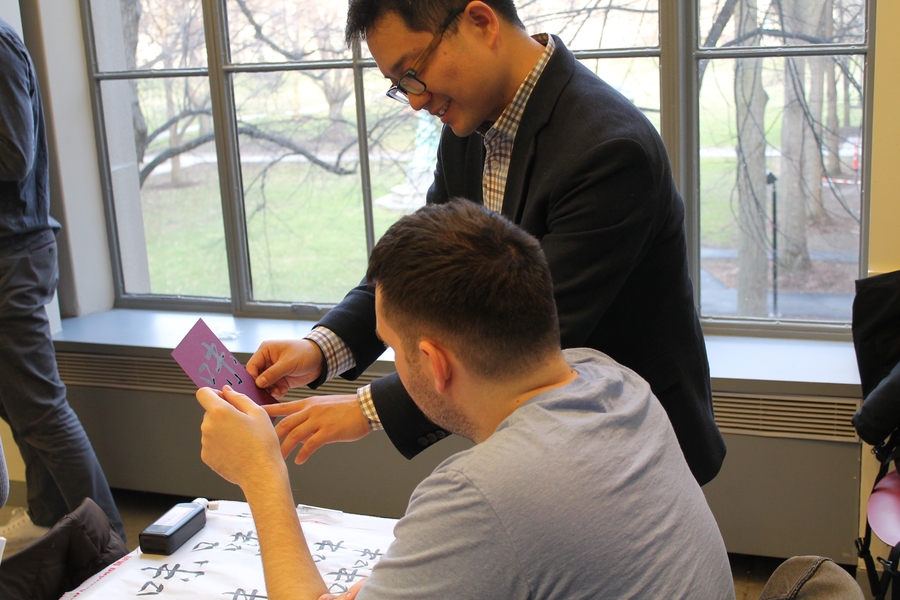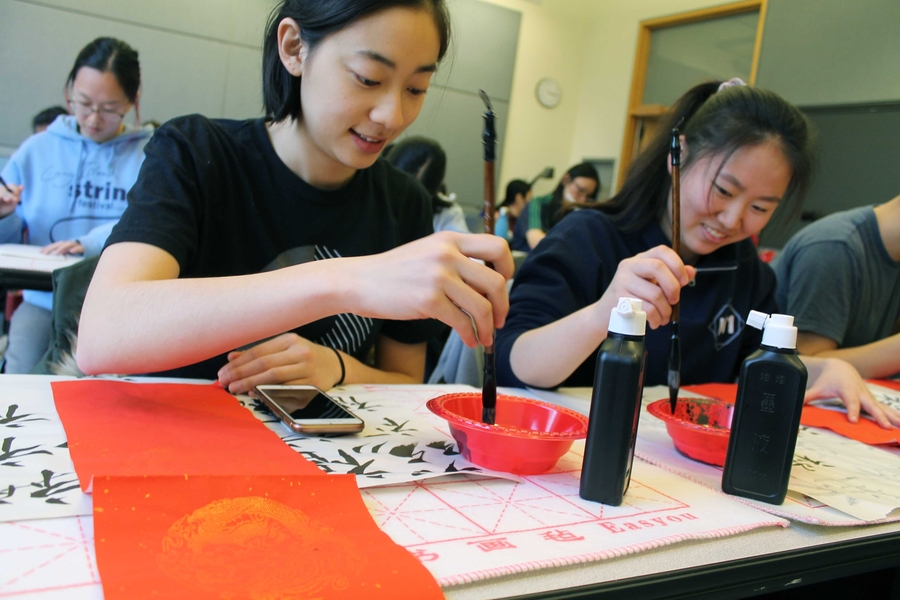Kang Zhou is a lecturer in Chinese in MIT Global Languages. His class, 21G.111 (Chinese Calligraphy), teaches the fundamentals of one of the best-known traditional arts during the Institute's Independent Activities Period in January. Students taking this class may be learning Chinese as a second language but are not required to speak the language to participate. Here, he explores some of the secrets behind the calligraphy craft, as well as reasons for creating this IAP class at MIT.
Q. What is the difference between teaching the writing of Chinese characters and teaching Chinese calligraphy?
A: When teaching Chinese characters in traditional Chinese class, emphasis is placed on accuracy in writing the characters. The students need to understand and grasp the structure, stroke order, and other basic knowledge. However, in calligraphy class, we decipher these Chinese characters to gain more insight into them. We study the evolution of the characters — that is, where did they come from and how have they changed? How have the shapes of these characters developed in the thousands of years since originating from oracle bone script? What are the different calligraphy styles? What aesthetic standards have people held for calligraphy during different time periods? What kind of personal experiences, as well as social and cultural information, is reflected in each calligrapher’s unique style? We often say that when looking at the work of a great calligrapher, we can actually see that entire era. With this in mind, we also wonder how the art of calligraphy interacts with Chinese society and daily life. These are the type of questions we study when learning calligraphy.
Q: What do you think students take away from this class?
A: Studying Chinese characters and calligraphy is essentially about communication — helping us convey and appreciate feelings. The class places great emphasis on increasing contact and building relationships with others through the art of calligraphy. We have card-making activities and giving “fortune” for Lunar New Year. We also have a class trip to the [Boston] Museum of Fine Arts to appreciate the art of calligraphy. Students gain an appreciation for not only the art of calligraphy, but how you can learn about Chinese culture through the perspective of calligraphy and characters. Also important is practicing the vital principles of calligraphy: meditation, concentration, observation, and reflection. One of the important aesthetic principles of calligraphy is balance, which greatly aids students’ study and life.
Q: How did you learn calligraphy?
A: I was born in the countryside of Xi’an, Shaanxi, and my first introduction to calligraphy came from my grandfather. He wrote beautiful script, so he would help other villagers write documents, and in doing so, gained great respect from the village and was known as the “cultural man.” I was very curious how someone could gain such status from being skilled at calligraphy, and through this I realized the power of Chinese characters. My parents greatly valued my calligraphy education, and I started going to the city for calligraphy classes from a young age.
Later on, I had the opportunity to meet a famed calligrapher and learn from him. Interestingly, it seemed to me that this old calligrapher taught me more on how to be a good person. He often said: “If a person does not do well, the characters will not be written well; if the person is honorable, only then will the characters be written correctly.” Thinking about it now, it is a fascinating notion that calligraphy makes children start to contemplate what makes a person good from such a young age. Later, I realized that in Chinese culture, admiration of calligraphers’ works involves not only critique from an artistic perspective, but also evaluation of the calligraphers’ morality and character. Therefore, when we appreciate calligraphy works in class, we also analyze the life experiences and stories of the calligraphers to further our understanding.











